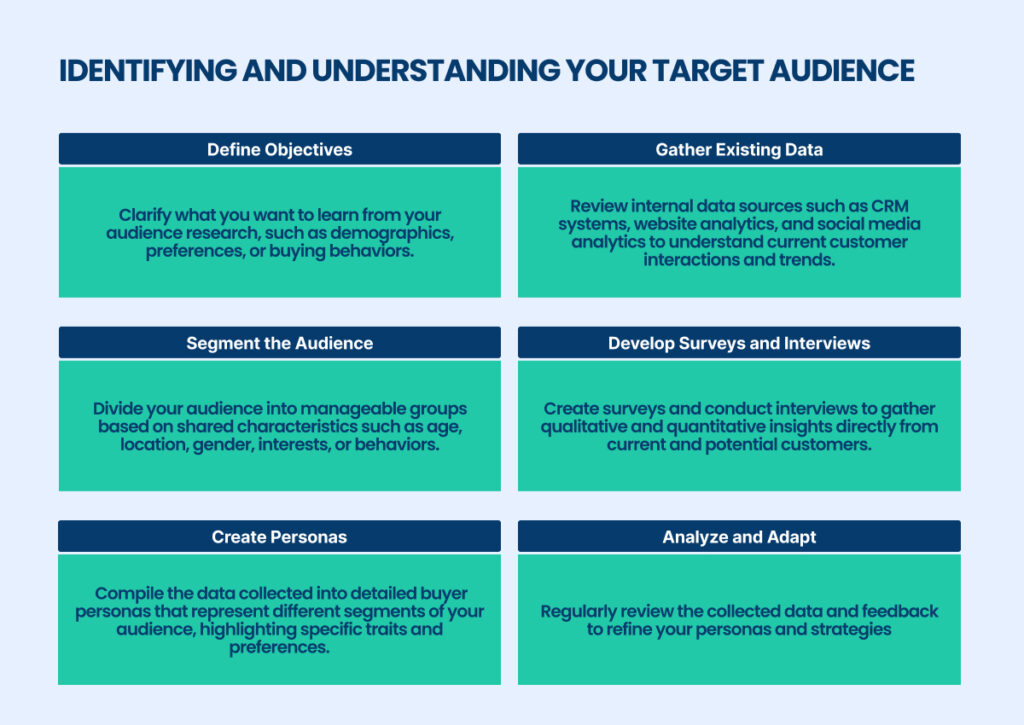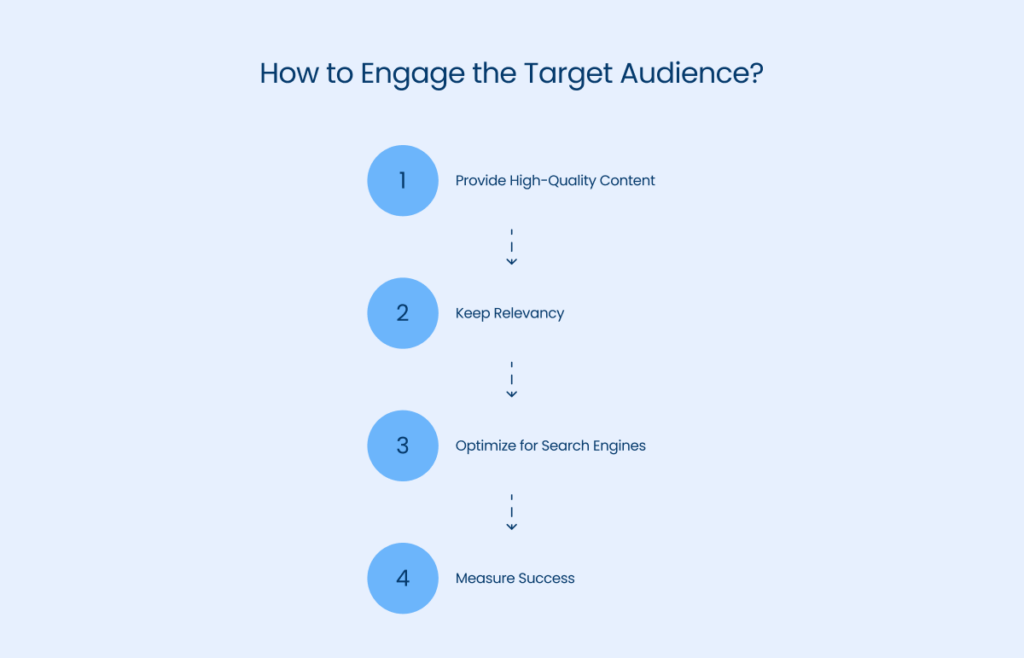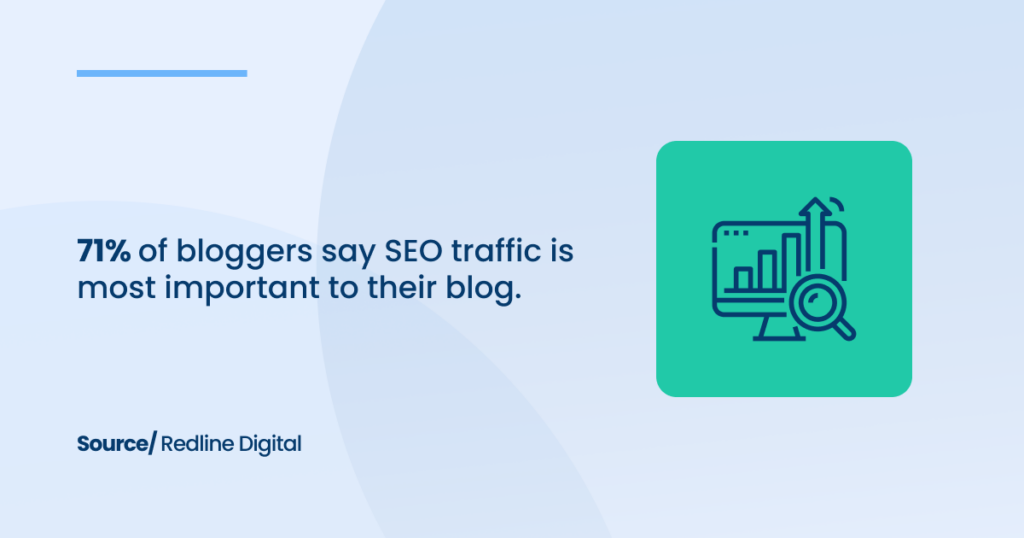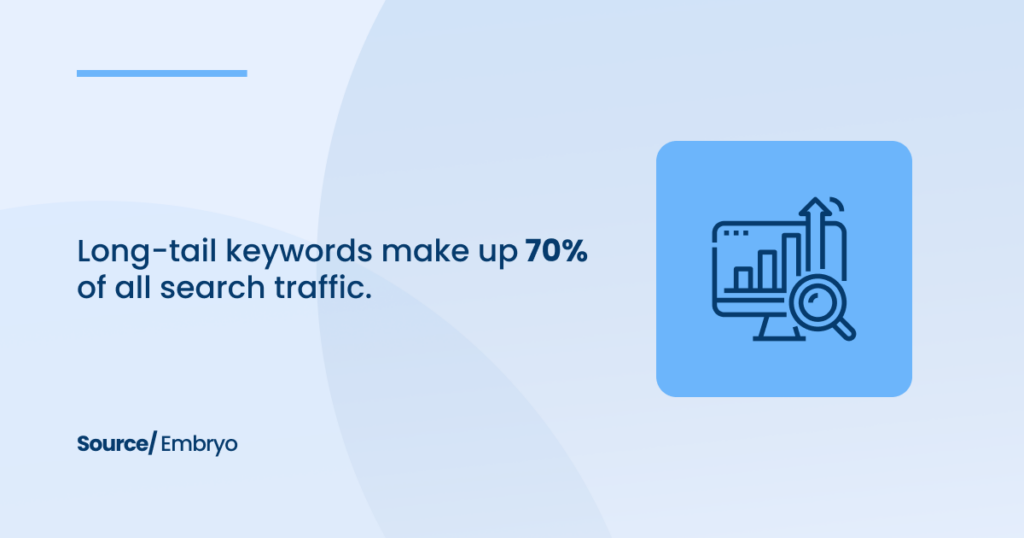Crafting an effective digital content marketing strategy is no longer a luxury but a necessity.
It’s about more than just creating content. It’s about understanding your audience, tailoring your message, and delivering it in a way that resonates.
Ahrefs highlights that 82% of marketers are actively investing in content marketing.
Source: Marketers investing in content marketing, Ahrefs
The increased number reflects the shift towards more strategic, data-driven approaches to creating and distributing content that resonates with target audiences.
Accordingly, partnering with a professional Content Marketing Agency will craft bespoke content strategies that align with brand goals and market demands.
The blog post will cover the seven crucial elements that form the backbone of a successful digital content marketing strategy.
1. Audience Understanding
Understanding your target audience is the cornerstone of any successful content marketing strategy.
In the realm of digital content marketing, where competition is fierce, and attention spans are short, tailoring your approach to meet the specific needs and interests of your audience can significantly amplify the impact of your content marketing efforts.
88% of successful content marketers prioritize their audience’s needs over sales messages.
This initial step is crucial because it lays the foundation upon which all other elements of your content strategy for digital marketing are built.
Research and Segmentation
Identifying and understanding your target audience begins with thorough research and segmentation. The more you know about your audience, the more effectively you can engage them with relevant content.

Segmentation involves dividing your audience into smaller groups based on shared characteristics.
This is a critical step in refining your digital content marketing strategy because it allows you to tailor your messaging and content to the specific needs of different segments.
For instance, younger audiences may respond better to fast-paced video content on social media platforms, while a more mature audience might prefer detailed articles or e-books.
Effective segmentation ensures that each piece of content is suited not just to a general audience but to specific groups, thereby increasing the relevance and effectiveness of your content marketing strategies.
Persona Development
Creating detailed personas is a strategic approach to enhance audience understanding further.
A persona is a semi-fictional representation of your ideal customer based on market research and real data about your existing customers.
Source: HubSpot
Developing personas involves more than understanding demographic information; it requires delving into your audience’s psychographics – their motivations, challenges, and decision-making processes.
Creating buyer personas involves a structured approach to understanding your ideal customers.
Collect Demographic Data
Gather basic demographic information such as age, gender, income, education, and marital status through surveys, social media insights, and customer data.
Identify Behavioral Patterns
Analyze purchase histories and online behavior to understand buying habits, product preferences, and loyalty traits.
Understand Motivations and Goals
Conduct interviews or focus groups to learn about the personal or professional goals that drive your customers’ decisions.
Assess Pain Points
Determine the challenges or problems that your products or services can solve for your customers.
Map Out the Decision Process
Identify the key stages in your persona’s buying journey, including the factors that are most influential at each stage.
Define Content Preferences
Look at what types of content (blogs, videos, webinars) and platforms (social media, email, websites) your personas prefer and consume most.
Create Detailed Persona Profiles
Compile all the information into a detailed profile for each persona, giving them a name and a fictional backstory to bring them to life.
2. Content Creation
In digital content marketing, the creation process is pivotal in shaping a brand’s engagement and ability to communicate effectively with its audience. Businesses with content marketing have nearly 6x higher conversion rates.
Central to this is choosing the right content formats and ensuring the content is both high-quality and relevant.
These elements are fundamental in executing a successful digital content strategy that meets key performance indicators such as lead generation and increased brand awareness.
Choosing the Right Formats
The effectiveness of a content marketing strategy heavily depends on selecting the right types of content to meet the brand’s and audience’s needs.
Source: HubSpot
Various content formats serve different purposes in the content marketing funnel, and their strategic deployment can significantly impact a brand’s visibility and engagement levels.
Blog Posts
These are essential for any digital content marketing strategy to improve search engine rankings and establish thought leadership.
Well-crafted blog posts that utilize SEO best practices can draw organic traffic from Google and other search engines, improving visibility and engagement.
Source: Redline
Videos
Video content is crucial for engagement and can dramatically increase the time spent on site.
Platforms like YouTube and social media channels provide opportunities to reach a broader audience.
Videos are particularly effective for tutorials, product demonstrations, and storytelling, making them a valuable tool for brands looking to increase engagement and provide detailed information in an easily digestible format.
Infographics
These are excellent for condensing complex data into visually engaging content that can be easily shared, thus increasing brand awareness. Infographics cater well to visual learners and perform exceptionally on platforms like Pinterest and LinkedIn.
eBooks and Whitepapers
For B2B digital content marketing strategies, eBooks and whitepapers are effective for lead generation.
They provide in-depth information on specific topics, establishing the brand’s authority and encouraging website visitors to exchange their contact information for valuable insights.
Email Newsletters
A direct channel for reaching an audience, email newsletters help maintain regular contact with customers, keeping them informed and engaged with the latest updates, insights, and offers from the brand.
Case Studies and Testimonials
These formats are essential in building trust and credibility. They showcase real-life examples of how the brand has successfully solved problems or provided value, which can influence potential customers during the decision-making process.
Choosing the right content format depends on understanding the target audience’s preferences and behaviors, which can be discerned through tools like Google Analytics.
Monitoring which types of content drive the most engagement and conversions can help refine a content strategy for digital marketing to ensure it aligns with the audience’s needs and the brand’s goals.
Quality and Relevance
The cornerstone of any successful content strategy is creating high-quality, relevant content.
Quality is determined not just by the information’s accuracy and the professionalism of the presentation but also by the content’s ability to engage the target audience and provide real value.

3. SEO Optimization
SEO optimization is an integral component of a robust digital content marketing strategy. It plays a crucial role in enhancing content visibility and ensuring it reaches the intended audience.
Google receives over 77,000 searches per second, underscoring the immense volume of information and user interaction that search engines handle daily. This staggering number highlights why effective SEO involves more than understanding and implementing current best practices.

It requires a strategic content creation and website management approach that aligns with search engine algorithms to maximize organic reach and relevance.
Keywords and SEO Best Practices
Search engine optimization aims to increase a website’s visibility in search engine results pages (SERPs), and keywords are at the heart of this process.

Keywords act as the bridge connecting user queries to relevant content on the web. Understanding the role of keywords and implementing SEO best practices are fundamental for any content creator or digital marketer aiming to enhance their site’s visibility and drive targeted traffic.
To effectively use keywords, marketers must first conduct thorough keyword research to identify terms and phrases that are relevant to their content and actively searched for by their target audience.
This research involves analyzing search trends, understanding the competitive landscape, and identifying high-opportunity keywords that attract traffic without facing insurmountable competition.
Tools like Google Keyword Planner and Ahrefs offer valuable insights into keyword metrics and can guide marketers in selecting the right keywords for their content strategy.
Technical SEO
Technical SEO refers to the optimizations that help search engines access, crawl, interpret, and index a website without problems.
Marketers must understand the technical aspects of SEO, such as site speed, mobile optimization, and structured data, as these factors significantly impact the site’s usability and search rankings.
Site speed is a critical component of technical SEO. Websites that load quickly provide a better user experience and are favored by search engines.
Google has explicitly mentioned site speed as a ranking factor, particularly for mobile searches. Marketers should regularly test their website’s speed using tools like Google PageSpeed Insights and implement recommendations to improve load times, such as optimizing images, leveraging browser caching, and minimizing the use of blocking JavaScript.
4. Content Distribution
Effective content distribution is crucial to a digital content marketing strategy. It ensures that your high-quality content reaches and engages the right audience at the right time.
Content distribution encompasses more than just pushing content out; it involves strategically planning how and where to share your content to maximize its impact and align with your business goals.
Multi-Channel Strategy
A multi-channel strategy involves distributing your content across various platforms to increase brand awareness and engagement.
- Identify the Right Channels: Not all channels will be right for every piece of content. Choose platforms based on where your target audience spends their time. Social media, blogs, email newsletters, and third-party publications are common platforms.
- Tailor Content to Each Platform: Customize content to fit the format and audience of each platform. For example, longer articles can be posted on your blog, shorter posts can go on Twitter, and visually appealing content can be shared on Instagram or Pinterest.
- Leverage Content Marketing Tools: Utilize tools to schedule and automate posting across different channels. These tools help manage and streamline the process, allowing for consistent presence without constant manual input.
- Integrate All Marketing Channels: Ensure that all channels work together cohesively. For instance, use social media to drive traffic to your blog or use email marketing to highlight a recent podcast episode. The key is creating a seamless audience experience across all touchpoints.
- Monitor and Adapt: Use analytics tools, such as Google Analytics or native platform insights, to monitor content performance across different channels. Based on what content performs best on each platform, adapt your strategy to optimize future distributions.
By strategically planning the distribution of content across multiple channels and optimizing the timing and frequency of posts, digital marketers can significantly enhance the reach and impact of their content.
This approach helps increase brand awareness and aligns with overarching business goals, driving meaningful engagement through high-quality content delivered in a thoughtful, strategic manner.
5. Data-Driven Decision Making
In today’s rapidly evolving digital landscape, adopting a data-driven approach is crucial for sustaining and enhancing the efficacy of a digital content marketing strategy.
Utilizing analytics for performance tracking and making informed adjustments ensures that the marketing team can align content creation and distribution efforts with the overarching brand identity and guidelines, optimizing for maximum impact and engagement.
Analytics and Performance Tracking
To implement a strong digital content strategy, systematically tracking and analyzing content performance across various platforms is vital. This data not only helps in measuring success but also provides insights that can drive strategic improvements:
Set Clear Metrics and Goals: Begin by defining what success looks like for your content strategy for digital marketing. Typical metrics might include page views, unique visitors, social shares, lead generation, and conversion rates. These metrics should align with broader business objectives, such as increasing brand awareness or boosting sales.
Use Robust Analytics Tools: Tools like Google Analytics, SEMrush, or HubSpot provide comprehensive insights into content performance. These tools can track a wide range of data points, from basic traffic statistics to more detailed behavioral insights like average time on page, bounce rate, and user paths.
Monitor Real-Time Data: Many platforms offer real-time analytics, which allows your marketing team to see immediate results from their content efforts. This can be particularly useful for adjusting campaigns on the fly or optimizing live elements like webinars or social media interactions.
Segment Data for Deeper Insights: Break down data by demographics, content type, or distribution channels to understand what works best for different segments of your audience. This segmentation can reveal hidden patterns and preferences that may not be apparent from more aggregated data.
Regular Reporting: Develop regular reporting intervals to review and analyze performance data. Monthly or quarterly meetings can help keep the team informed about what content is driving results and where there are opportunities for improvement.
6. Interactive and Engaging Content
Creating content that captures and holds attention is paramount in the evolving digital marketing landscape.
Interactive content is becoming an essential part of any effective digital content marketing strategy because it actively engages users rather than passively presenting information to them.
By incorporating interactive elements, brands can foster a deeper connection with their audience, encourage active participation, and lead to higher engagement rates and a more memorable brand experience.
Incorporating Interactivity
Adding interactivity to your content involves integrating elements that require and encourage user action. This approach transforms the user from a passive observer into an active participant, significantly enhancing engagement and information retention.
Interactive content can take many forms, from quizzes and polls to interactive infographics and dynamic videos. Each format engages users differently, making your content more engaging and effective.
When developing interactive content, aligning it with your brand identity guidelines and overall digital content marketing strategy is crucial.
This alignment ensures that each piece of content captures attention and reinforces your brand’s voice and message.
For instance, interactive content should use visual elements and tones that reflect the brand’s style and ethos, as outlined in the brand identity guidelines.
Incorporating interactive elements into your content also requires thoughtful planning and integration into your overall content calendar.
Timing the release of interactive content can maximize its impact, especially if it’s aligned with specific marketing campaigns or events. For instance, launching an interactive quiz related to a product release or an industry event can tap into existing user interest and engagement.
The use of AI in content strategies, particularly in crafting interactive content, is also on the rise. AI can help personalize interactive experiences for users by analyzing data on their previous interactions and preferences.
Source: Forbes
This personalization boosts engagement and enhances the user’s connection with the brand, as content appears more relevant and tailored to individual needs.
7. Consistency and Branding
In digital content marketing, consistency and branding are paramount to establishing a reliable and recognizable presence that resonates with your audience.
A consistent approach helps build trust and loyalty and reinforces your brand’s identity through every interaction with your audience. Implementing a content strategy for digital marketing that emphasizes consistent voice and visual branding is crucial for long-term success.
Maintaining a Consistent Voice
Your brand’s voice is the personality and emotion infused into your company’s communications. It’s how you communicate with your customers and how they respond.
Maintaining a consistent brand voice across all your content is crucial because it helps build a strong brand identity that your audience will recognize and trust, regardless of the platform.
A consistent voice should reflect your brand’s core values and be evident in every piece of content you create, from blog posts and videos to tweets and marketing emails.
This consistency ensures that your message resonates clearly and effectively with your audience, fostering a strong emotional connection and enhancing brand loyalty.
Incorporating AI content strategy can further refine voice consistency. AI tools can analyze your existing content to identify the core elements of your brand voice and ensure that every new piece of content aligns with these characteristics.
This can be particularly useful for brands operating across multiple digital platforms, as they must keep their messaging coherent and aligned across different formats and audience segments.
Moreover, a consistent voice helps differentiate your brand from competitors. A unique and consistent voice in a crowded market helps your brand stand out and can be a key driver of engagement and conversion.
It also guides your digital content marketing strategy, ensuring that all content is aligned with your brand’s personality and business goals.
Partner with [A] Growth Agency for Crafting Effective Content Marketing Strategies
A well-crafted content marketing strategy is your North Star.
As the digital landscape continues to evolve, the importance of effective content marketing strategies will only grow.
[A] Growth Agency can assist your business in navigating this complex terrain.
At [A] Growth Agency, we specialize in turning entrepreneurial dreams into reality with practical, tailored growth strategies.
We’re a team of data-driven growth marketers focused on delivering scalable results.
Our approach combines in-depth industry analysis and state-of-the-art technology that aligns with your business objectives.
Don’t think longer.

